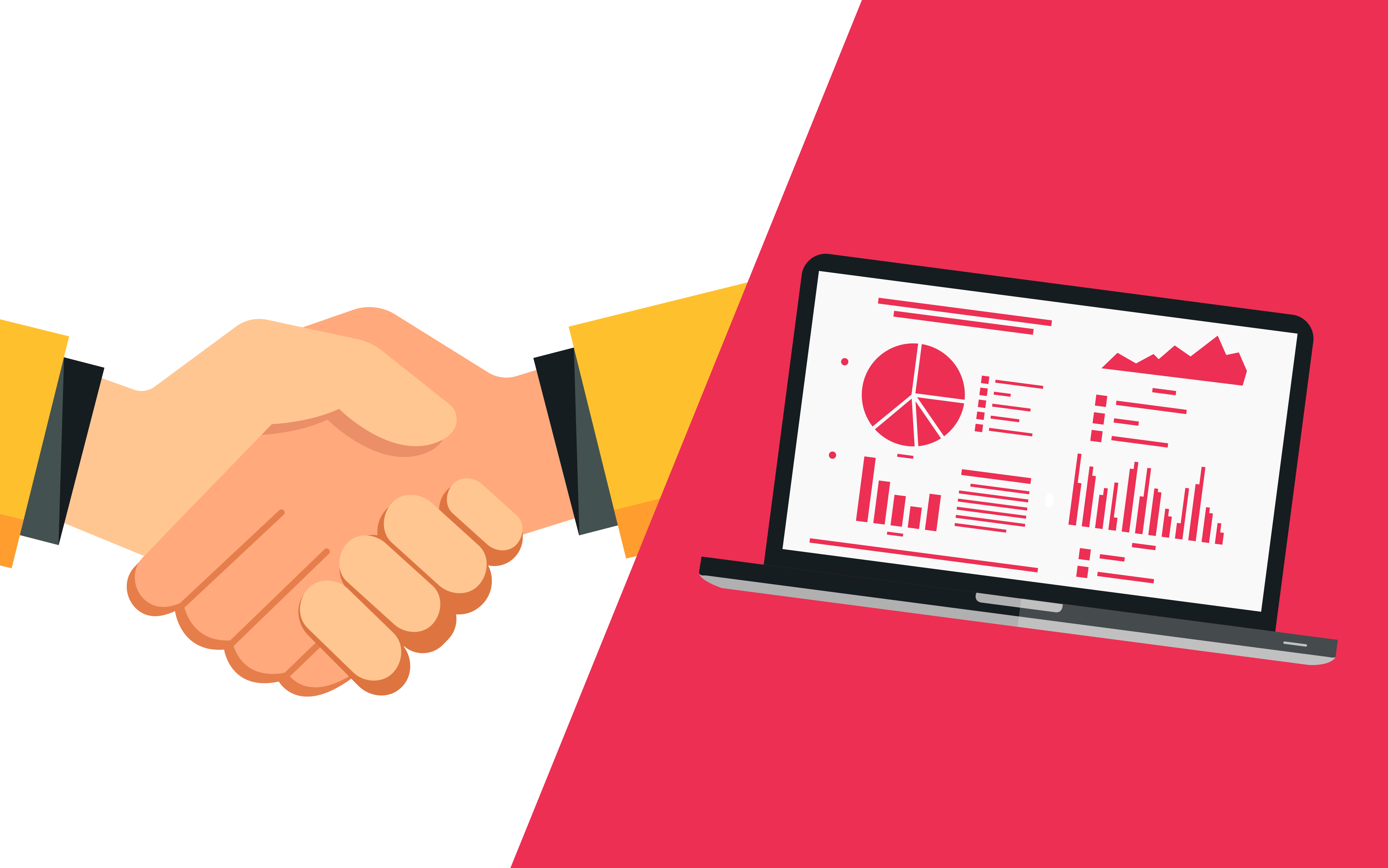How did Adwords change bidding at the end of 2023? (performance analysis)
What is AdWords? Google AdWords, now known as Google Ads, is an online advertising platform by Google. It allows businesses…

The use of both the RTB model and direct sales allows to achieve a similar end result – an ad is displayed on the website, and, after reaching a specific user, it allows the advertiser to build a relationship with him or her.
It is worth noting, however, that all the forecasts suggest that in 2019 the global expenditure on advertising purchased in the programmatic model will account for 65% of the total expenditure on online advertising. The total value of expenditure on programmatic advertising is supposed to be $84 billion, compared to $70 billion in 2018. Why is the disparity between the two models so wide, and will such a division of the market become a constant trend?
In order to understand the basic differences in the functioning of both solutions, we must look at them ‘from the inside’. Such an analysis will allow identifying the basic elements that are crucial for every marketer, as well as show why programmatic is gaining more and more users.
| Traditional buying | Programmatic |
| Manual work | Speeding up the purchasing processes – automation of work |
| Limited optimization possibilities | Huge optimization possibilities |
| Campaign management individually for each publisher | Central campaign management |
| Many technical specifications | Wide possibility of using data in the campaign (1st, 2nd, 3rd) |
| Distribution of advertising materials individually for each publisher | Management of the materials from a single place in all the spaces |

Direct sales are based on a manual, very meticulous process of campaign execution that may require many hours, or sometimes days, of analyses. These are necessary not only to understand the needs of the customer but also to negotiate the terms and conditions of orders with the publishers.
Only at the ‘de facto stage’ does the work for the customer begin, i.e., execution of the campaign, control, and optimization of results, and final reporting. Obviously, all this requires a lot of both time and effort, and, at the same time, poses a risk of there being misunderstandings or mistakes between the advertiser and the publisher.
If you choose direct sales, on the one hand, you guarantee the price and availability to the customer, and, on the other, you buy a specific package of impressions with minimal influence on their selection or quality. And this is exactly where the customer starts having doubts.
[mc4wp_form id=”407″]
This is also where the programmatic model ‘comes to the rescue’ since it’s based on automatic execution and algorithms rather than human work. It allows excluding manual work and the complicated process of communication between the two sides. Of course, it can’t be said that the use of the RTB model allows to completely eliminate the human factor because it is still necessary to manually enter data, provide technical support, and evaluate the inventory quality and targeting possibilities.
Nonetheless, thanks to the automation of a part of the process in programmatic, most campaign components – such as reporting and optimization – can be handled in real-time. So, the first major advantage of a programmatic buy is, simply, the speed and efficiency of acting.
It’s worth keeping in mind that the model of a campaign’s execution affects the way of its targeting. The main difference between direct sales and RTB is the precision in reaching a specific user – programmatic allows the marketer to switch from mass purchasing of ad impressions to individual impressions.

The use of RTB creates opportunities for targeting a campaign with the use of data collected during the campaign as well as data available on platforms (e.g. Google) about demographics, interests, or purchase intentions. This is a complete opposite of direct purchasing, where you can choose from predefined options that have been dictated by the publisher and that depend on the parameters available on ad servers.
In the case of programmatic, you should have a wider perspective. Thanks to the use of data available in this model, you can significantly broaden the possibilities of targeting, which will include, among other things:
Programmatic allows reducing displays at the campaign level, by means of capping on all publishers, which, in turn, reduces media waste and helps you not to ‘attack’ the user with your materials.
A direct buy from the publisher allows the marketer to determine what he/she buys, and for how much. It allows us to maintain guaranteed availability of space but is connected with the obligation of a specific purchase. Of course, in this case, the publisher can neither sell the space to someone who offers more nor deactivate the campaign at any time without costs.
The RTB model doesn’t give such guarantees but also doesn’t require specific declarations from the advertiser. An advertiser buys single impressions and can optimize the campaign in real-time (i.e. spend money where the campaign works), and the publisher sells to the person who’ll pay the most for an impression.
This, exactly, is the most important difference
between direct and programmatic sales.
Advertisers who care about where their ad is located may be more willing to pay
higher prices in order to have the space guaranteed. In direct sales,
advertisers pay only for the place where their advertisements are displayed,
whereas in the automatic model, advertisers bid for the target group. The
auction happens within milliseconds, and the highest bid is selected to place
their ad in the space. Result? In 2020, the sums allocated to programmatic will
reach $98 billion and will account for 68% of expenditure on online
advertising.
This is another aspect that shows the differences in the functioning of the two models. In principle, in direct sales, the campaign is executed at a determined, fixed CPM rate, which will be delivered at a specific time. Thanks to this, direct sales are somewhat guaranteed, and advertisers pay for the certainty that the ads are delivered to specific users. Marketers, therefore, know exactly where their ad will be displayed and how much they have to pay for it.

In the case of programmatic, things are different. The marketer can set minimum rates because auctions are held for each impression, and advertisers never stop bidding. This creates a market that is dynamic but, at the same time, unpredictable in comparison with direct sales.
So, even though it may seem that it entails many challenges, it also allows you to be sure that you pay the best rate for a particular impression, thus maximally optimizing the effects of your campaign.
To sum up, despite all the differences, the two models of online communication are complementary to each other. Both direct sales and the RTB model have their fundamental strong points, although marketers will certainly notice more of these on the programmatic side. It should be remembered that – when used together – they produce very good results.
Despite all the differences, the two models of online communication are complementary to each other. Both direct sales and the RTB model have their fundamental strong points, although marketers will certainly notice more of these on the programmatic side. It should be remembered that – when used together – they produce very good results.
Nevertheless, this requires a data-oriented, methodical approach to every executed campaign, as well as close cooperation between the advertiser and the publisher. Do marketers have time for this in the present era of digitization and speed? I don’t think so, and this is why it’s worth keeping in mind the most important advantages of programmatic, which clearly show where in the world this solution’s current trend originates from.
Main advantages of programmatic (please put the following points in the box parallel to the above conclusion)


Karol Jurga
Chief Revenue Officer
See it in action.